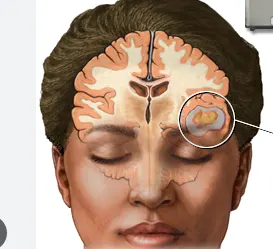Migraine is not just a headache. It’s a neurological disease that can be disabling. It can lead to missing days of school or work, being less productive at school or work, being unable to perform household responsibilities, and missing out on family, social, and leisure activities.
An estimated one billion people worldwide, and 39 million Americans, have migraine. It occurs most often among people ages 20 to 50, and it’s about 3 times more common in women than men, according to an article published in January 2022 in JAMA.
There is no cure for migraine, but treatments and lifestyle approaches can help minimize the number of attacks a person has and shorten or reduce the severity of those that do occur.
Migraine is a neurological disease characterized by repeated episodes of symptoms, called attacks, that usually include headache, often accompanied by nausea; vomiting; sensitivity to light, touch, smell, or sound; dizziness; visual disturbances; and tingling or numbness in the face, hands, or feet.
Migraine attacks may come on suddenly without warning, or they may be preceded by certain known triggers, such as skipping a meal, being exposed to smoke or air pollution, or experiencing a change in hormone levels as part of the menstrual cycle.
The frequency of attacks varies from person to person. Some people have attacks several times a month, while others have them much less frequently.
Most migraine attacks last from 4 to 72 hours, per Mayo Clinic, although effective treatment can shorten them to a matter of hours. On the other hand, some migraine attacks can last even longer than 72 hors.
While a variety of triggers can set off migraine attacks, triggers don’t directly cause the attacks or the underlying disease.
There are still gaps in doctors’ understanding of what causes migraine. However, some doctors describe the migraine brain as hyperactive, or supersensitive, by which they mean that the brain of someone with migraine reacts more strongly to environmental stimuli such as stress or sleep disturbance than the brain of someone who doesn’t have migraine, resulting in the symptoms known as a migraine attack.
There are two main types of migraine, as outlined in the International Headache Society’s (IHS) classification of headache disorders: migraine with and migraine without aura.










